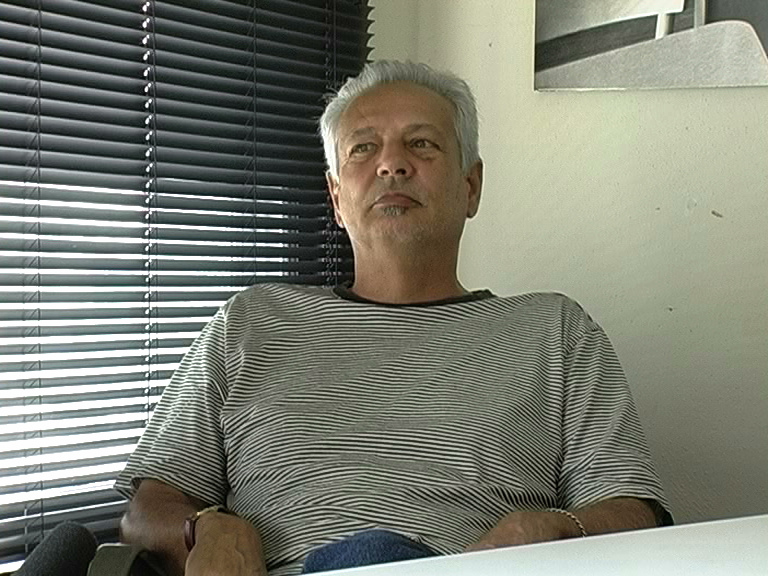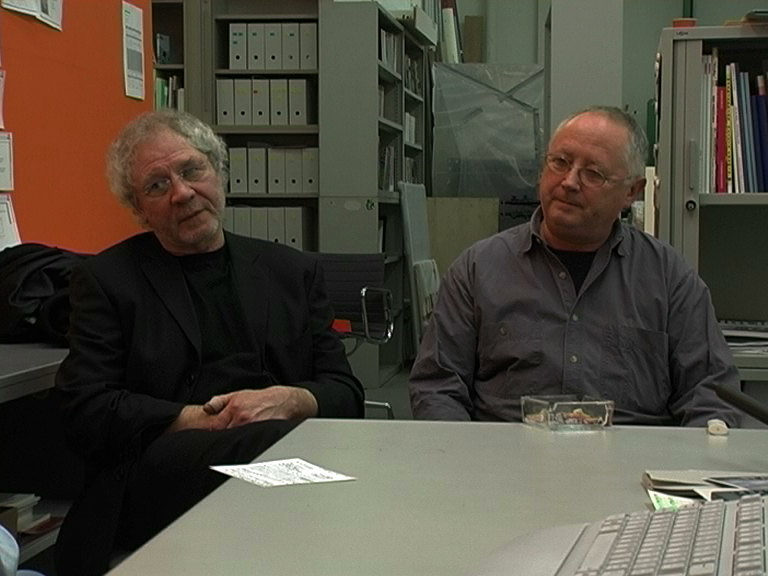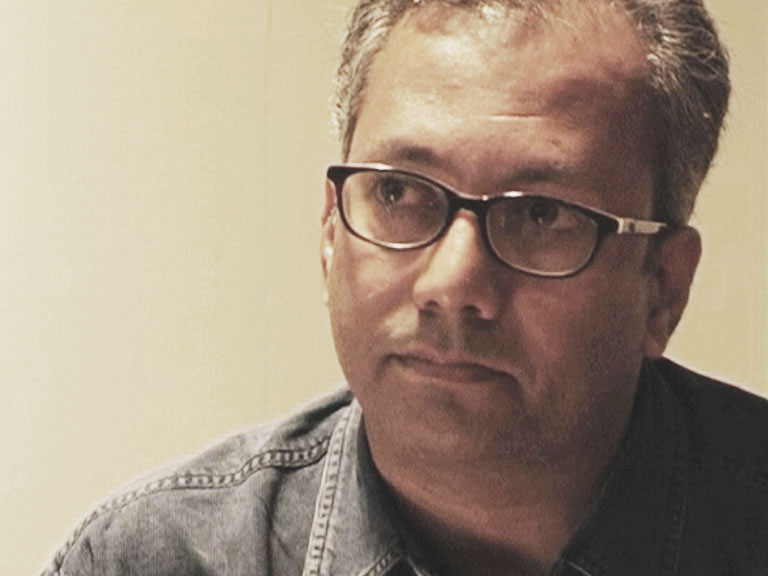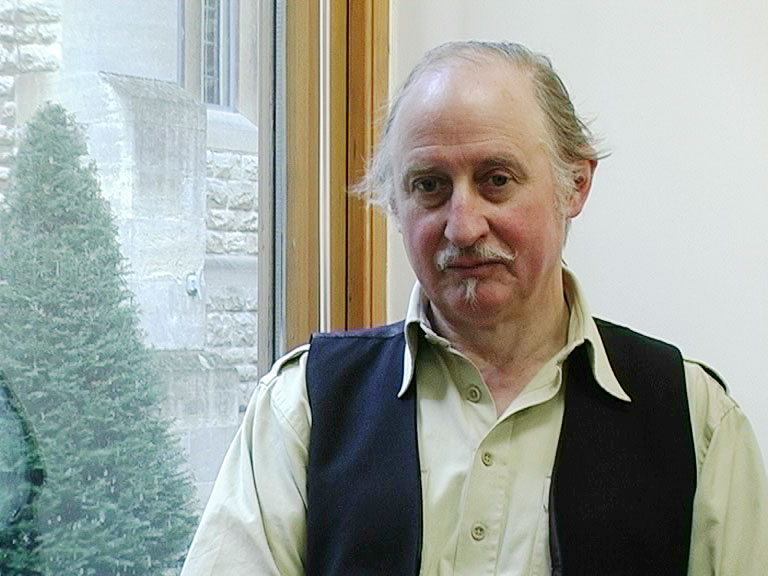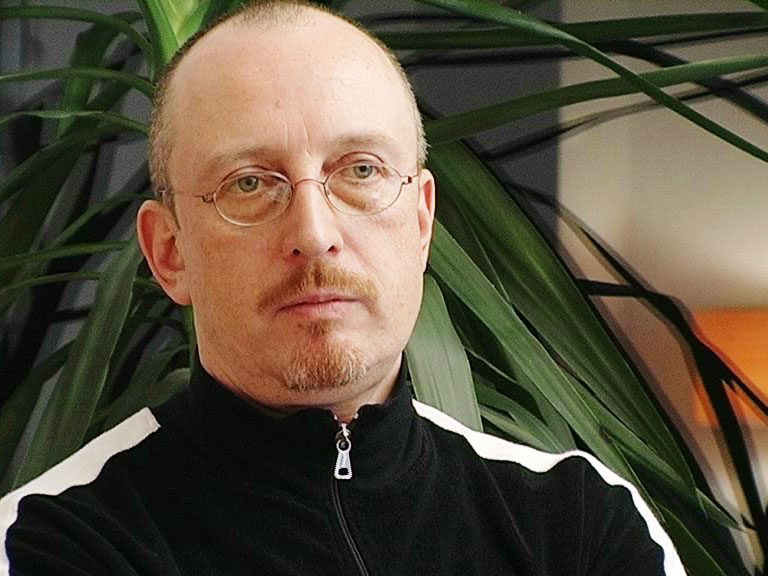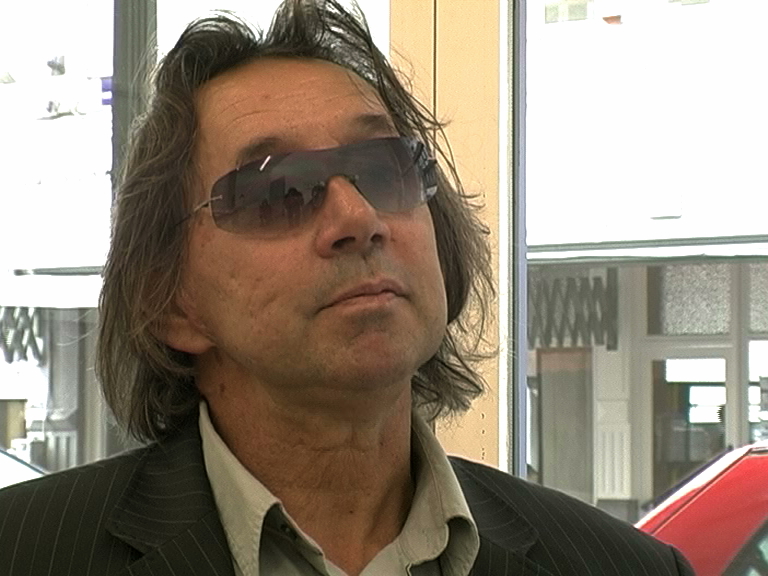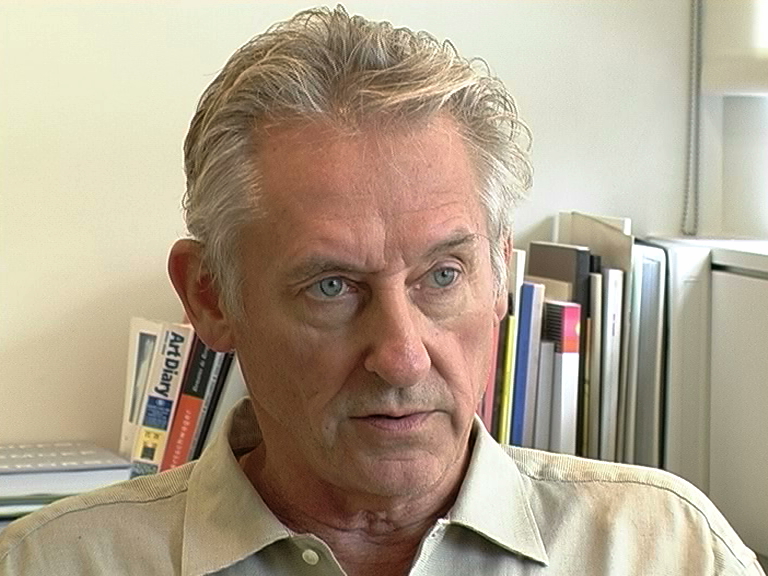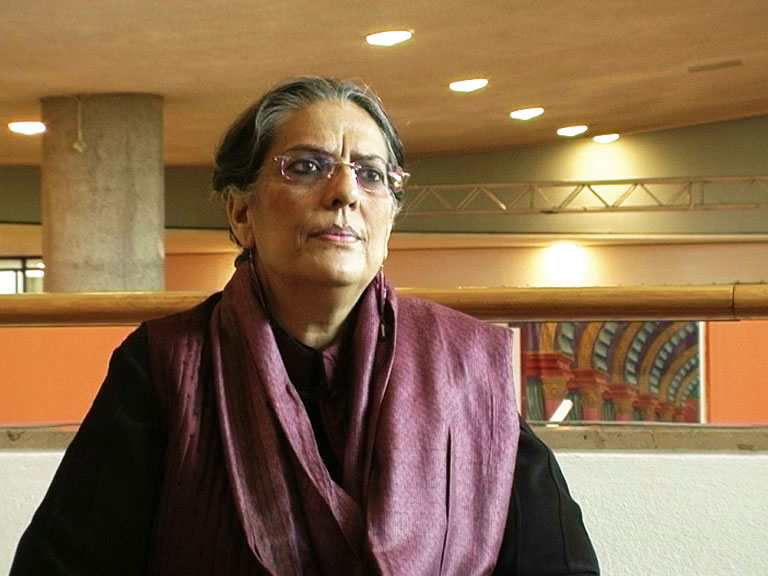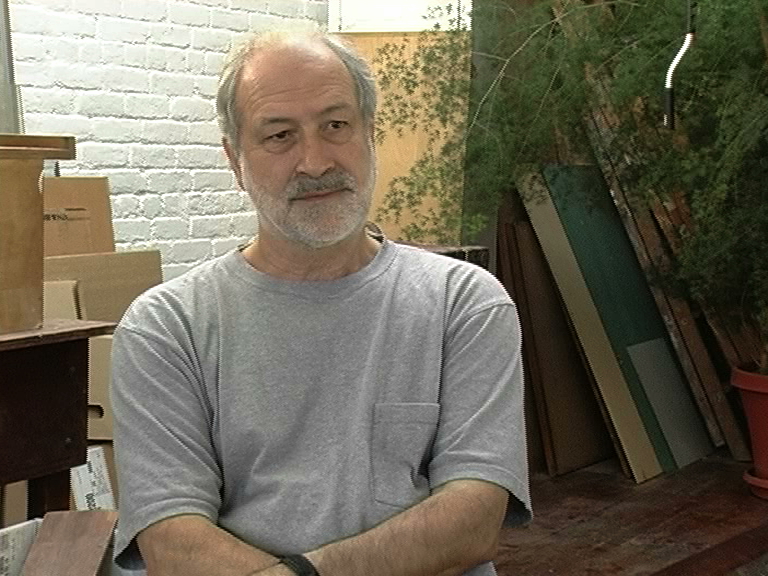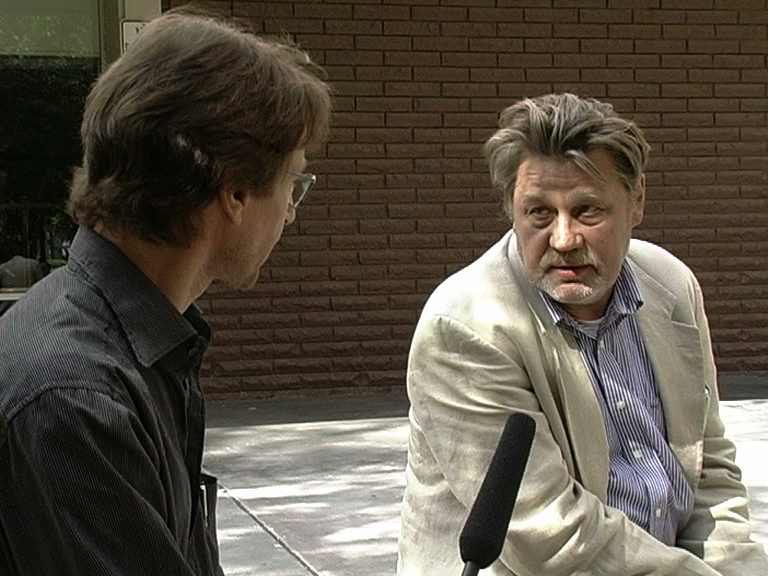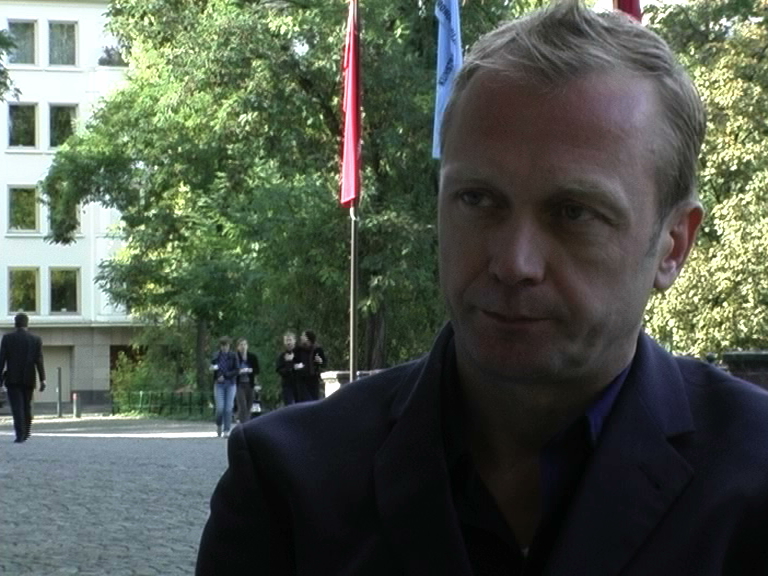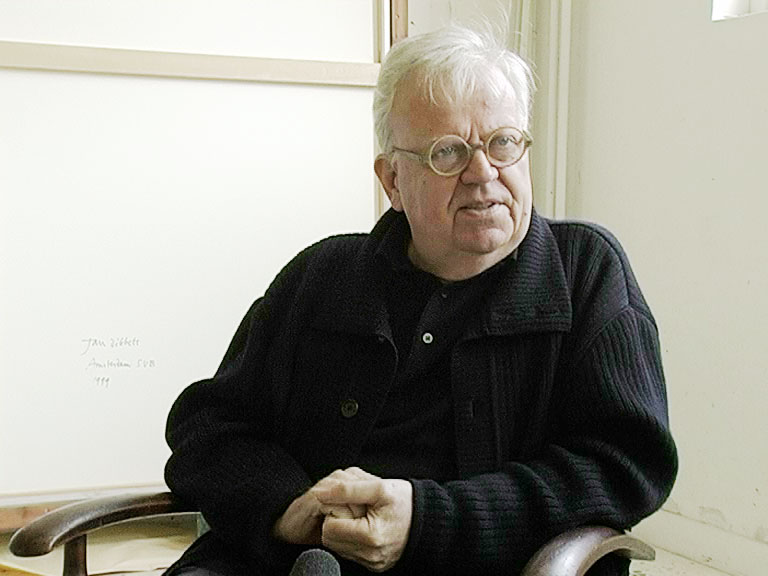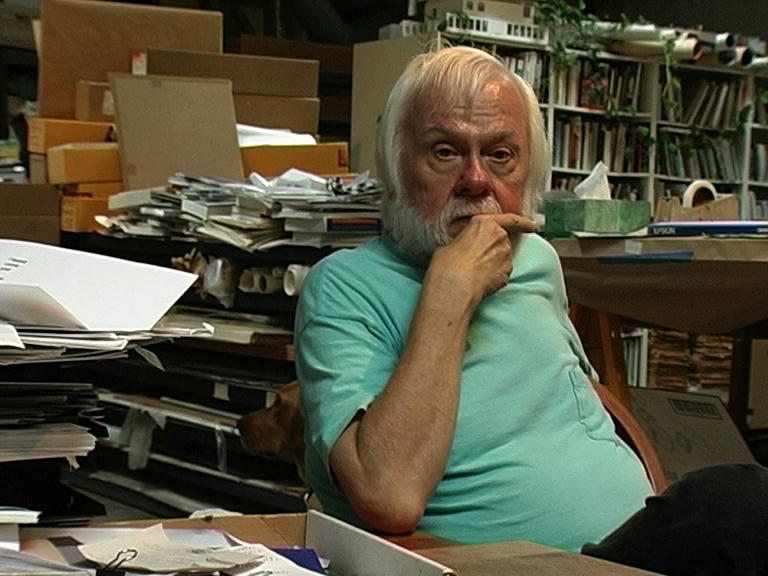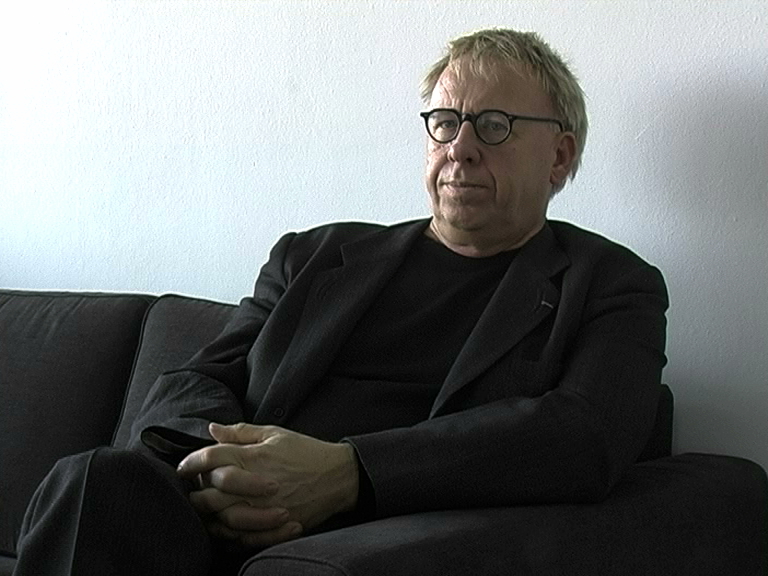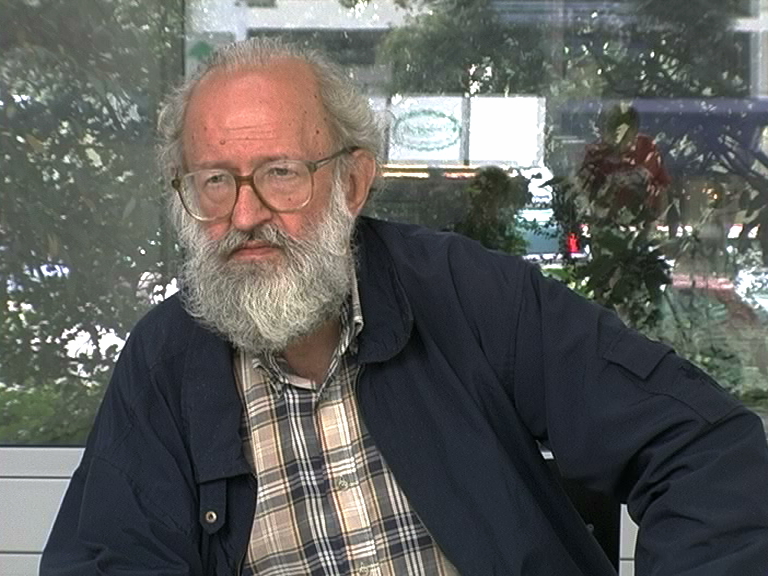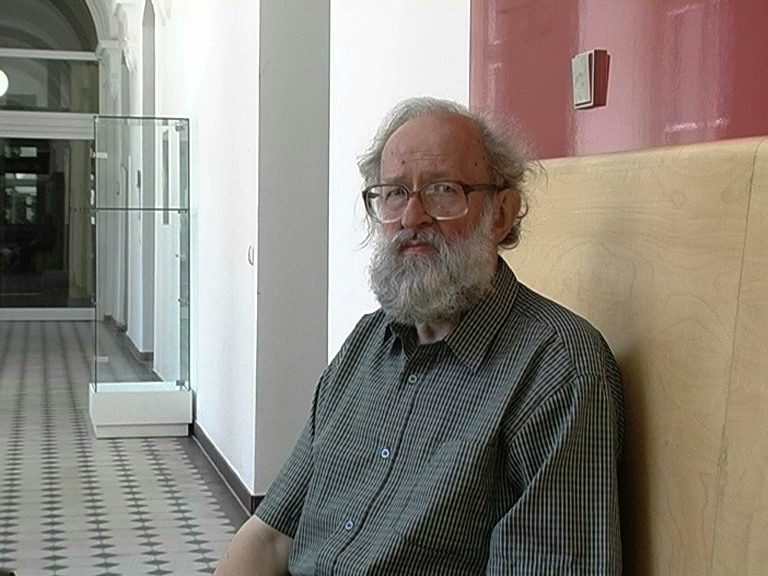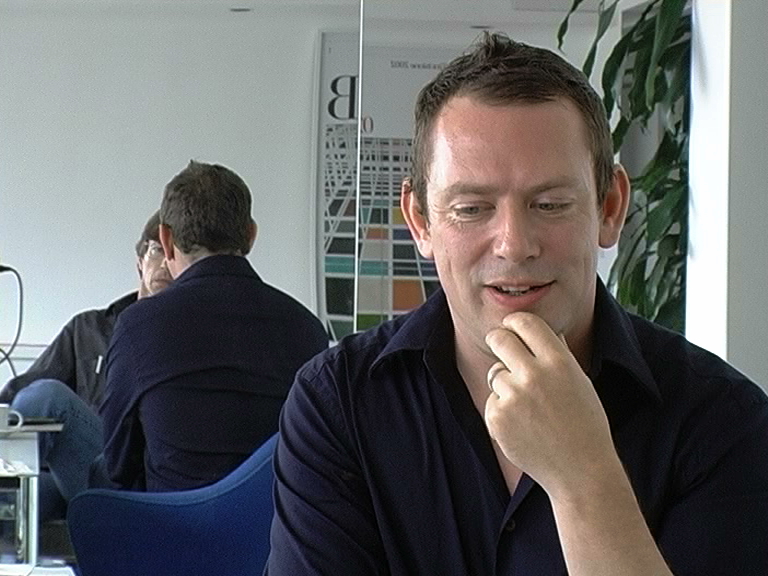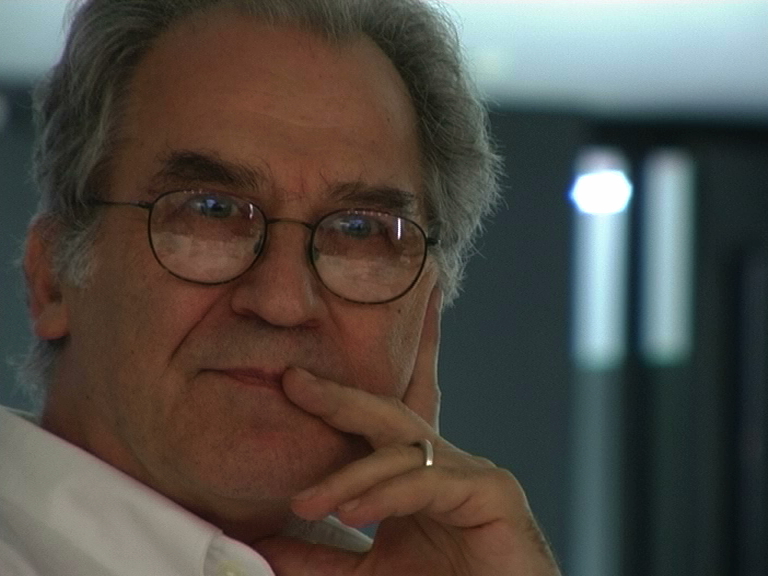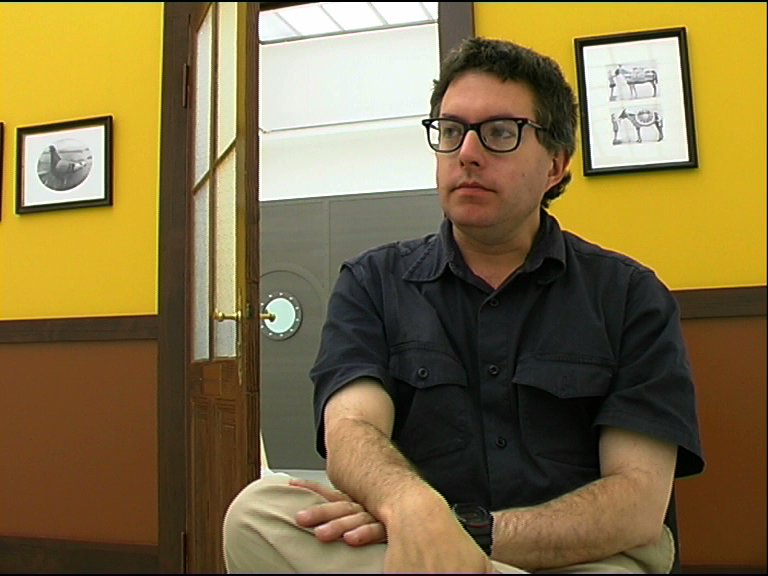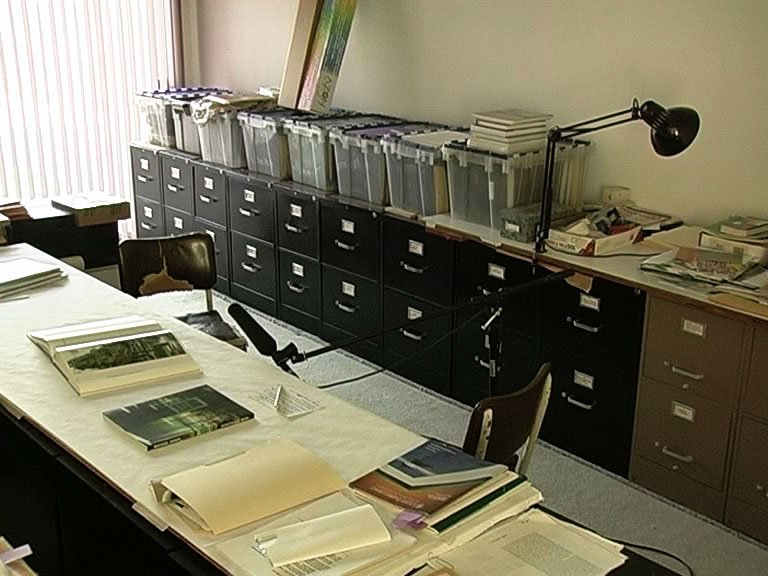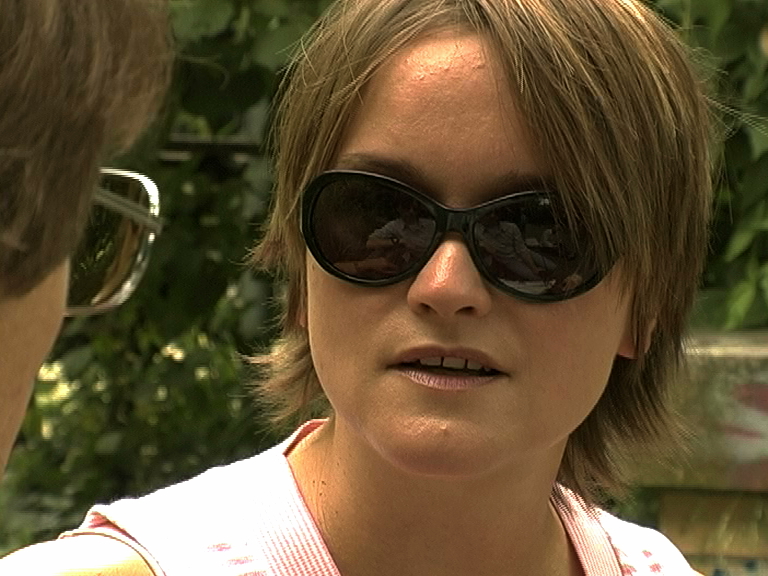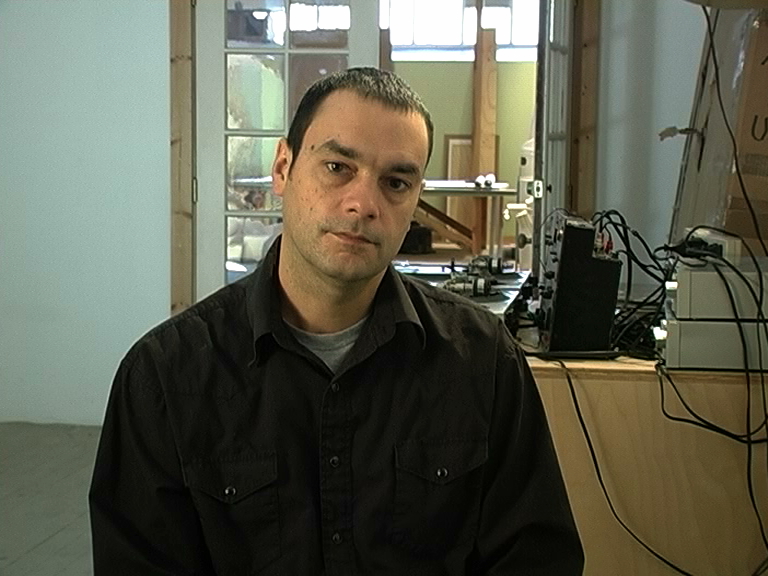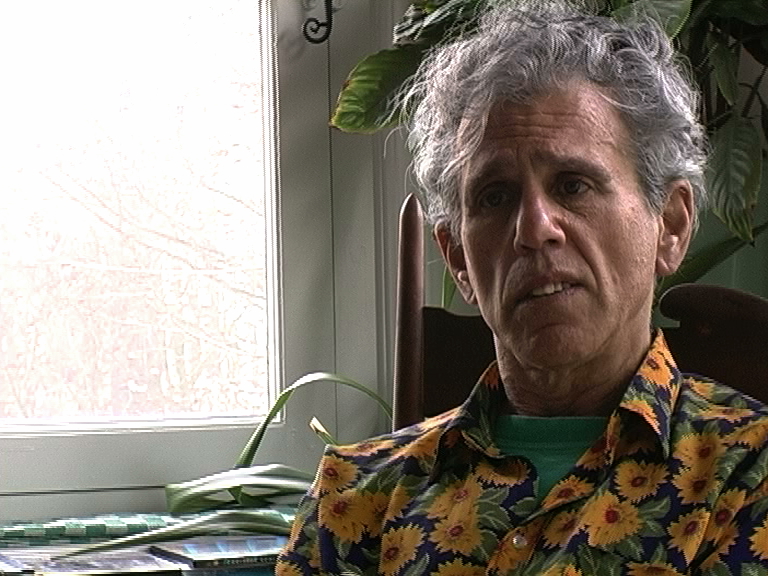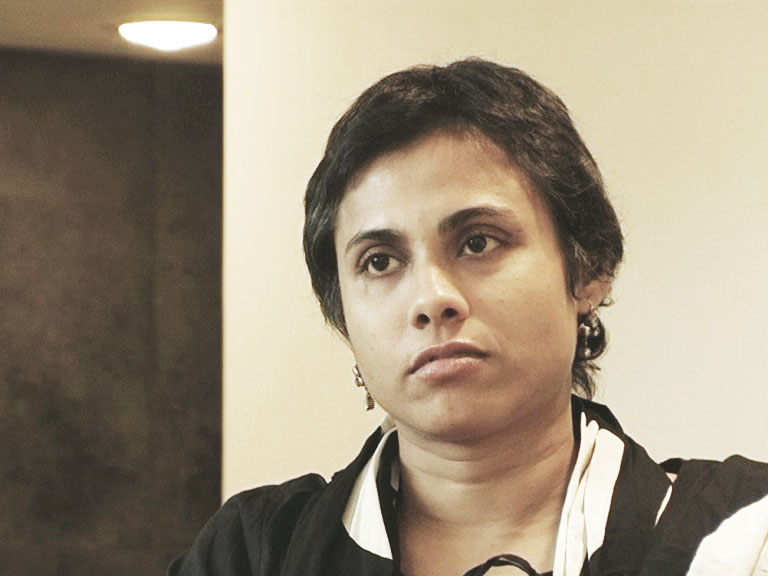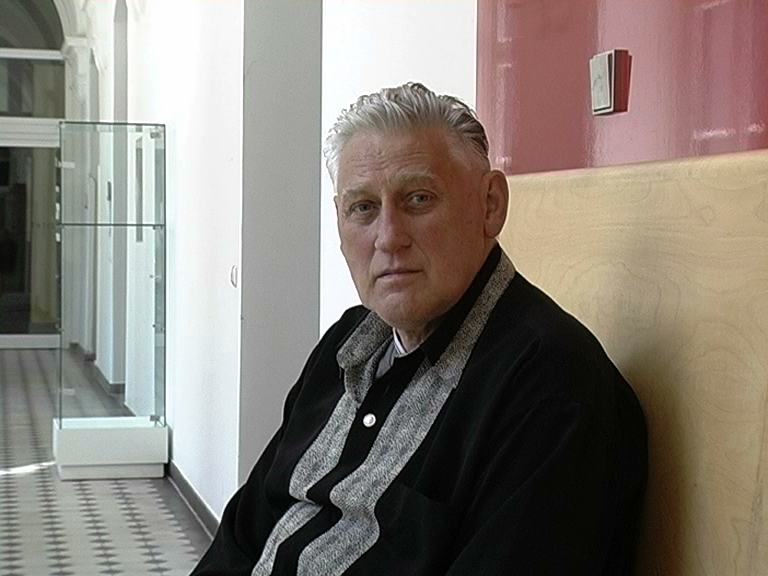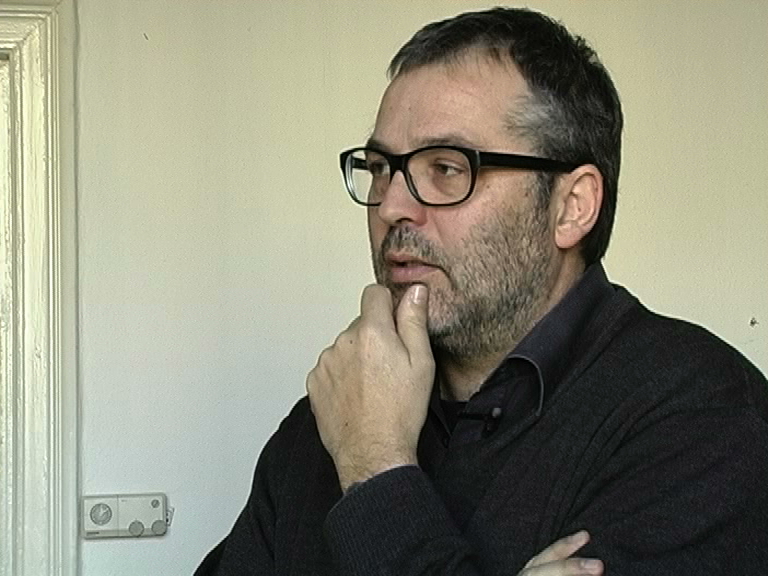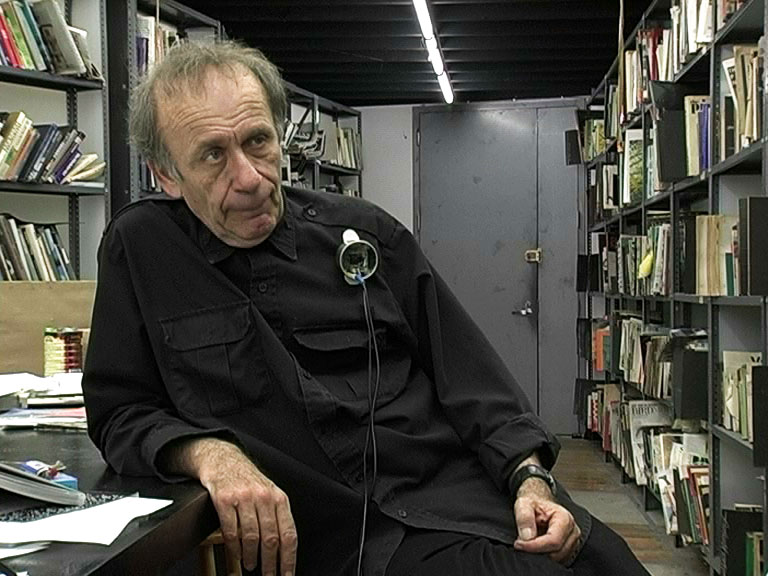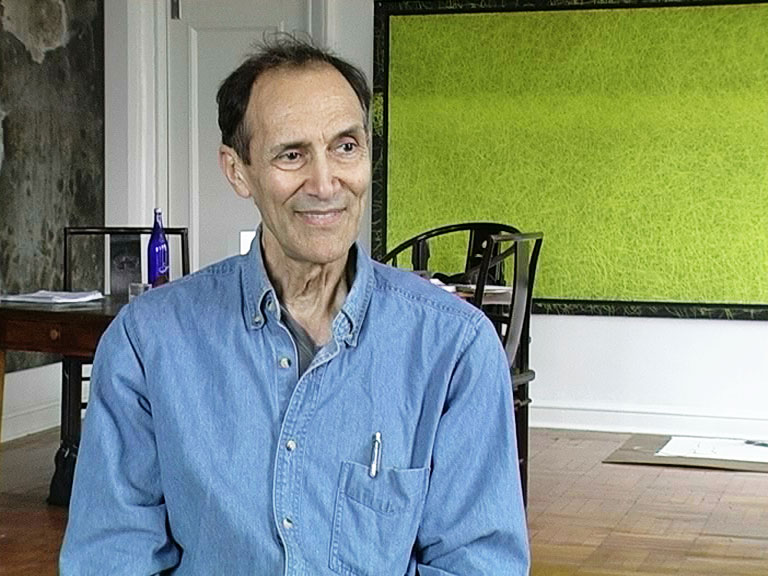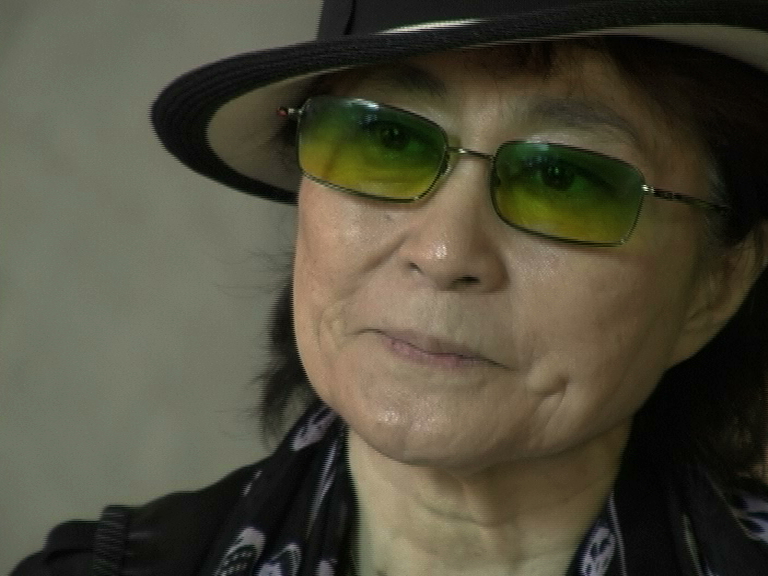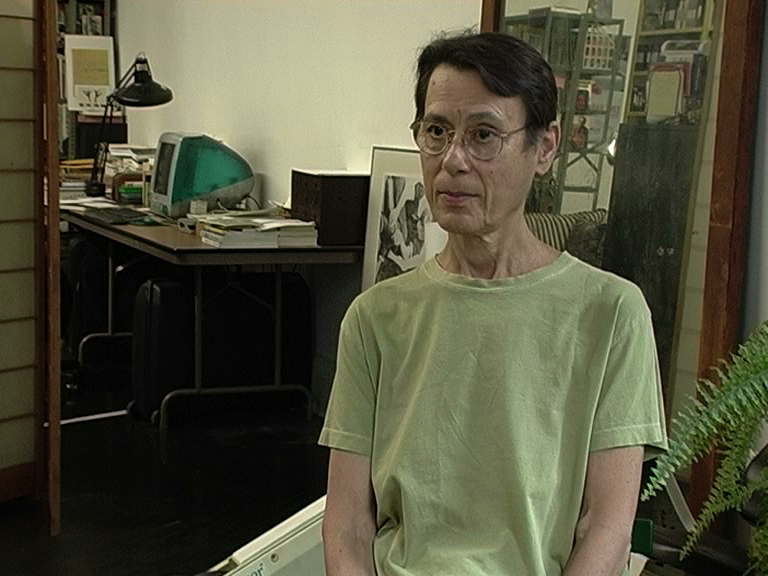S.R.: What do you think was the strongest influence on your work?
D.B.: [laughs] That starts very good! I don’t know – a short answer.
S.R.: But maybe you can tell us what is your favorite practice in the history of art. Do you have something like a favorite?
D.B.: No. Nothing which I can relate closely except that I participated from the very first one to everything following on the so-called conceptual art exhibition, and for that reason I think which is absolutely normal that some people affiliate me with conceptual art which is of course of use, but if they read what I wrote in the very first exhibition under this title, I was extremely critical, and I think that was the only text of that sort inside this first show in Leverkusen, where I was saying more or less what became even true after a few years about the dangers of such a title and about the academism of such an idea and about the almost philosophical stupidity of two such words. So I did participate with this kind of heavy critique in my mind, and publicly said, and I still have the same position.

S.R.: […] If we take the text – I think it’s in French, “attention” from 1969 … //“mise en guarde”// “mise en guarde” […] where you took all the different aspects which already in 1969 were really critical aspects of conceptual art, and when we see a text like “limites/critiques” from 1970 […] where you again said that it’s important to have a look at the frame, at the canvas, and the whole system of representation, then I can understand that you have this very critical perspective on conceptual art.
D.B.: Especially in the beginning […] You first have to realize that the first exhibition under this title – and I think that was maybe the most interesting aspect of what was into the basket of conceptual art – was in fact all the people at the end of the 60s which were having – for the public, or for the art critic or for the organizer, or for the art world – absolutely no place. And what they were doing was something no one was able to say, this is a painting, this is a sculpture, this is … ; so every artist of that time who did something with not a clear specification was absolutely bring inside such a title, and the first exhibition in ’69, which was in Leverkusen „Concept Art“ – the very first exhibition under this title – bring something like 80, 90 people from more or less all around the Western world, and inside these people you were having people who today for everyone will make no sense to put into conceptual art. For example Bob Ryman […], Agnes Martin … But at that time […] Everything which was making not sense at all or not a clear sense was supposedly conceptual art. So no one should forget the beginning, the official beginning of many people being put together under this title. And that was immediately at that time that I was very suspicious about such category, and even in the text you refer to, I remember I wrote possible activity of so-called conceptual artists. Believe it or not, but when I wrote that, I make some possible works, and these works has been done later on by some of these artists. So today, if you read it you can put a name; at that time it was just coming from my head. Like: we will even see such or such a thing …, and later on they were done by so and so and so. But I was always very critical and very suspicious of the term; but then […] also because of the variety, the interesting point was the fact that it was really the explosion of a new way to think about art, to work, to exhibit, to do something anywhere … all these ideas, all these manifestations were of course almost never done before. When they were more or less done, it was like one individual 20 years before; it’s always somebody before. But as an explosion, as a really new sensibility, I think that was the interesting point of this way to categorize people with no category.
S.R.: If you read this text, you also understand that the term of idea is a problematic one, because if you have an idea you can make art, if you don’t … you cannot … this is absurd but interestingly is that f. e. Sol LeWitt was thinking on this term of idea as a production (?) of art and some years later Joseph Kosuth formulated a very self-reflexive, very tautological term of “idea” – “art as idea as idea” – if I understand it right, your whole practice – the thinking, the writing, the painting or the installation, however you call it – is performing a specific kind of idea in the field of art but it’s not focused on […] an idea in the Platonic sense – for me it’s exactly the opposite. Am I right?
D.B.: I think you are correct. It would be stupid to say, that you can do something without any idea or without thinking. But in art in general, I think, ideas are very dangerous; it’s not enough. Anyone can have ideas. If you have ideas, it’s good for you, if you have a series of ideas but to base the work for 40, 60 years with ideas, you are sure such a thing does not exist. It’s based on a thing much more complex, kind of a ping-pong between the way of making something, then the idea coming from the object, and back to the idea etc. For me especially from the context which I started to work exactly 67/68 and more and more only focusing all my work on the place where the work is going to be seen. If I have one originality, this one to work in situ which is also work which I more or less not invented but used for the first time which became an impossible word like usual, because being used by different people for very different purposes. But when I said that it was really attached to my work, which was done in the place, living in the place, visible in the place and most of the time destroyed in the place. This was something much more on my interest and on my style of thinking than anything else. But from what you said about the thing based on an idea, I will not say just the contrary I always said that the work of art – and that was my strongest conflict with the idea of conceptual art – is the fact that for me a work of art has to be visible. Then it can be absolutely anything we can imagine, but if it’s not visible, if it’s not existing concretely I think for me, it does not exist or it‘s part of another category which can be whatsoever music or what you want but it’s not visual art. And if we still are more or less in this domain, I think, we also have to analyze what this domain means, and it’s too simple to say, all the 20th century is fight against the object, everything important done for one century was always a fight against the object, with the idea how to get free of the object. And of course, I think it’s a still very important question, but to solve that question to say, we don’t make any more objects, was always for me totally foolish. If you look back, you also can see that even the one who speak like that at that time did produce quite a lot of objects and continue to do it.
S.R.: Actually I liked very much that you always talked about the thing that is visual, are you able to see it? If you don’t see it, maybe it’s a different kind of art.
D.B.: I don’t say it’s impossible but at least for myself it’s related to something else, which can have any names you want, but it’s not in the domain of visual art. And to escape of that it’s only possible if you do something else, again, you go to another site. But if you work in this domain, to escape from that and then to have a proof then it’s important or it’s good to have escaping, it’s a joke. It was some example as far as it was very quick and not repeated, if you take the work with the gas by Bob Barry this kind of work makes a big problem. What do we speak about? Is that visible? Not at all. It’s a good idea? Maybe, I don’t know. What does this idea mean, in what category they exist? In a way they are almost like a pure concept work, but he did not even follow that; that was one work, two or three around this idea, and then becoming to be a, more or less, a painter. You can see that with almost every people in the so-called conceptual art, especially from the people who were supposedly the most radical, about the vanishing of objects, the non-existence of objects, which is an impossible situation. Maybe the only example which I think is not without an object but returns the idea of the object in a very different way and is still extremely consistent with this basic idea, is someone like Ian Wilson. He is the only artist I know who since now more than thirty years – what is his name? – Ian Wilson only does what he called discussion or conversation or exchange where the result is in your memory. So, in a way any conversation is a really materialized thing, in a way it’s almost like an object , a conversation is kind of an object but in his way to practice it’s no result, except what you have in your memory and what maybe he has in his memory and that thing is the corpse of his work. Not to make any comment – is it fabulous? is it very good ? is it weak? I think it is the only artist you can mention who is consistent in front of such a thing since 1968/69. I’ve no other example. Of course you can imagine that such a position is completely outside of the society, in that term it’s outside of the society not only like maybe all the artists like to be outside of the society, but he is so outside of the society that to survive with such a work is almost like a crazy life; he has to be a monk or something. Is not to make a critique, but it’s the only example I can see about someone who maintains the idea of not producing an object of any sort, except the volatility of the conversation which I think is a very strong object but this objects disappears just after the fact.
S.R.: Let me come to another question of this set. What is your aim with your practice?
D.B.: Speaking about the fact that it’s always as possibly connected with a site – whatsoever the site – the physicality and the reality of all these things together are certainly the things I am the most concerned, and I know since the early beginning that the only way to make that possible even if it is not true, but at least to have a chance is to be extremely rigorous and strict and with this methodology of working. In other words, to make it a little more simple and to do what did a lot of my close artist friends, to transform a work which has a quality to be done in the field or somewhere in the street, and to make a picture of that and then to sell the picture as a piece, it’s something I always found completely destroyed, even the origin of the work. Such a thing I never allow myself to do it. Not to say that we cannot make a picture of the work but this is a picture, a documentation, a postcard, and nothing more. But as a work either someone or some institution can buy the piece where it is, how it is and cannot be ever moved to go anywhere else, or it’s destroyed after the time of the exhibition. This for me is one way to really keep a certain kind of reality altogether and not to produce an object which in fact can be manipulated by anyone, anytime and forever. Forever for the best, because if you are manipulated 300 years later that means that at least some people are still interested with your object, but that’s not so often the case. In my work anyhow it’s impossible to do that; you have to destroy it or you have to accept it, but you cannot move it. In other words my work since that time is never autonomous, it’s always a kind of a métissage, mixed within a lot of things which are part of the work but which are completely heterogeneous of the work. But when the work is there, of course, the wall exists as part of the work but you cannot take the wall in one site and take the work some place else; you have the wall and the work like a unit. … to speak about the very early work the paper is done by myself, but the wall is not done by myself, but the full thing became more or less an object, and this object, of course, is absolutely belonging to the owner of the place because the wall is rarely my wall. If you don’t understand that you don’t understand my work it’s not any autonomy but something which is always dependant of a structure a context.
[Hustenanfall]
If you just think about work done a long time ago, with some paper glued on the wall, you cannot detach the paper to one side and the wall to another; in other words, this wall with the paper is a piece, but that means that the wall is not mine and the paper is not anymore mine. You have there a new object, no doubt visual and really solid, but this object belongs to a structure and then kills the idea of an art which can be autonomous from any situation.
S.R.: Does it ever happen that somebody tried to make a fetish out of a piece of wall with paper on it?
D.B.: Not something I know directly, but I’m sure some people tried to do that. I take care now, but at the beginning I was always leaving paper. Already at that time you were having people can I have a piece of paper?, completely stupid under a frame. You cannot prevent that but it doesn’t belong to my work, it’s just some stupidity. Unless you see it and then you can counter-attack but you cannot a priori make impossible someone to make a forgery from anything. So that’s really close to that.
S.R.: For example Blinky Palermo also did this blue triangles on the wall, and I know two collectors who took it from the wall because they moved to a different house //and they kept it (laughs)// and they took it from the wall and put it somewhere else. (laughs) That for example is something like a forgery.
D.B.: To me at least it looks like it; it all depends on the way the artist belongs to his own work. I do works where it’s possible to be rebuilt some place else, when it’s for example something absolutely easy to control like to say, use any room in your apartment and the work has to be on the windows. There does not exist an apartment without windows, so you don’t have to go and see what is this kind of windows. You know that the subject matter remains, even if it’s a big room like here or if it’s a small bedroom with only a small window somewhere. For such a work, for example, I can make the wall if the people move they have to destroy it where they were before and in a certain way to use whatsoever the windows in such a manner that it remains under the same kind of work. It’s like a replay or it’s like a re-interpretation inside a specific wall. But most of the time, if it‘s really specific and not specific but as an object like I take the window because it is really an object and I like to use the transparency, the light, the color if it’s much more specific than that you cannot transport it and that’s also the reason that so very few collectors are buying my work, because I’m sure they have somewhere in their head, „what can we do with that if we go out or if we change the place?“ etc., and unless they can be interested with the works which can be manipulated on a certain wall, if they want something more specific but they don’t like the idea to lose it one day, they don’t go to the effort of buying. When I said, it’s very strict as a way to work, it’s automatically also implying a position in front of the society; that means for example most of my work can be exchanged but one time. This is totally against capitalism; if you cannot exchange anytime you want for the rest of your life, you are breaking this connection. I don’t want just to say this is the most important, but it’s certainly something which is inside my work without having to speak about it.
S.R.: For me it’s interesting to ask: is it possible to renew an approach like this, to say, I don’t want to build something like a fetish that can be always valued and exchanged for money or for other art pieces. I think this was one of the strongest breaks in the history of art with the autonomous object the „masterwork“, you also call it in some of your texts. Do you think, maybe we are wrong and some people will say this time it’s not the most important thing that you don’t build a development because an art work only exists when it is mediated. And if the artwork is mediated – it doesn’t matter if it’s a painting, an installation or whatever – then it’s taking something like a cultural value, or an cultural-exchange value or a symbolic value. Do you think it’s possible to renew this approach, this implicit critique of the object, the exchange object?
D.B.: I hope so and I believe so. There are many ways to break this thing, just you have to take this basic risk, not to say that it’s impossible – and I think I am a good example to show that it’s not impossible to survive – but you have to invent almost everything. If it’s only to sell a work any kind of object. It’s not easy and very few artists succeed in doing already that like an autonomous object, but at least we know the rule and we know that such a rule implies the kind of freedom of exchange, the possibility not to control what’s happening with your work which is also a very tricky position – if you go to America, we know that the property is only what you buy, if you remain in Europe, especially in France, you know that when you buy the work you are not buying the moral rights, but in America such a thing even doesn’t exist. As an American you can only know that what you sell is forever something else. In Europe you might fight to say, I sell my object but you cannot do that and that, and I still have the right to say you cannot do it. But if you don’t give the possibility to transform the work to a third, to a second buyer, then you really short-circuit this mechanism. To my point of view, and of course it’s not a model, with my own work, most of the cases I succeed in doing that. It’s not to say this is escaping of everything but at least it’s very clear that someone who buys a work – and that’s maybe the reason why since twenty years I’m often doing public works – they buy the work … and after that that work will never be installed any place else; so no one can buy it back as the work which is bought by the city of Torino or Tokyo or Paris. Especially because even these works are not as an object which is maybe known especially for a place. It’s an object which takes a full place into account; you cannot sell the Empire State Building to go to Japan, I mean of course it’s possible that can happen that you can immediately see the kind of extravaganza, and if you do that once, that’s finished forever. The way of exchange has many way s to be different can be re-invented or invented as well as some artist can re-invent painting; they are not the first to do a painting, but sometimes, very difficult, very rare, you have an artist who makes new painting, and that’s a new invention even with a very old medium – so why not invent another way of relation with the people who are supposedly collectors, museum collections … Of course it’s extremely difficult to already sell one work, one object. It’s extremely complicated.
S.R.: How do you describe the typical daily work as an artist or in which aspects does today’s work differ from to your former working day first question is more about your ideal, and the second about what you have to do.
D.B.: I think when I started to work, more professionally speaking, has to be invited not only to work in your studio – anyhow, I quit my studio thirty-five years ago forever… – I must say since I started to be invited around 68, I have had the chance to be always invited all the time. This really kept me extremely busy since the very first time my work became more public than private. This made me first of all working everyday and also because, especially at the beginning it was not really done so much by so many artists, the idea to make a specific work each time everywhere, which was putting myself on the road extremely often. I am much more often on the road than any place else, except to work. In the last thirty years I never have been two weeks at the same place in a row, non-stop – at home or wherever. The maximum time I can spend lets say it’s a big show where you have a lot of work to fabricate this is the only occasion where I am some place for two weeks in a row. If not, it’s rather two, three days, one week, ten days, and I go like that from place to place. To speak about my way of working, it’s a way which is my life since thirty-five years.
S.R.: Thank you very much maybe you can say two more sentences about this concept of a non-studio artist.
D.B.: I said anything two things very different together at one point. One was more or less physical. When I was very young, around seventeen years old, I visited all the artists who were living in the South of France – including Chagall, Picasso, Masson, plus fifty people totally unknown even today. I was very struck – without knowing exactly why – when after that I got very interested by the work of all these people; and as soon as one of these was doing an exhibition at least in Paris, even Picasso, I was running to the exhibition to see the work and maybe also the artist. And almost each time I was very disappointed. After I while I said, what’s happening? I visit the studios, what was very interesting, and most of the time I go to see the exhibition and it’s completely boring, made no sense whatsoever. That was really in my head strongly, like this is problem there somewhere. The second thing which criss-crossed this thing, when I started to work I was working in a cave, in a basement, very bad, like anyone who starts working, and of course I was doing some paintings and very quickly after, in 1967, I said, it’s impossible to remain in such a situation to work, so I have to find a place a little more decent, and at that time in Paris it was very difficult, and also I was having no money. To rent something was not easy, and to find a big place was even more difficult or then totally unreachable. At that point really I took the decision. I said, I cannot waste my time, I will never get anything, and that was at the end of ‘67, and one day I said, forget my basement, Paris is big enough, I will work in the street. And since that time I stopped completely to work with any normal place to produce something, and I must say my work started to be different. A lot of things were not conscious but then you are in the street what do you do. You cannot do something you do in your studio. So it started to make you thinking about what can be done in the street, and then I worked with the posters, because in the street, especially in Paris at that time, the walls were always covered with political affiches. That was a very easy technique to be used and I started to glue papers everywhere in the city, and little by little I only worked like that – in different ways, of course, if I do the Palais Royal it‘s more official and it’s still in the street. It’s a big difference, but it’s still there, that is the studio of something, when the thing is built. So it’s very interesting, because in fact it’s maybe a kind of a studio. But this studio is always completely different. And it certainly changed the way of working and prevented me even to prepare some object to be done. It cut myself from any wish to try to make on the back some works with can be a little easier to sell or to show with not making a big trip. So far, it’s like that, maybe not forever, but so far it’s like that and the way to quit the studio for me opened something, which for me I realized later on – when you see an artist in his studio and his work, first of all you understand much better the work, and I think I speak for any kind of artist; of course, if the artist is a very good one, it might be even more interesting, but I think even with an artist who is not really first class, to be with that person in his studio, it’s always interesting, it’s always something you can find … So you have something, living, alive, concrete. And when you see the work naked in a well-positioned gallery, all these surroundings disappear. When I consciously work outside, I realize that the only way not to lose this kind of a very important connection, was to really work in situ because – at least at that time – you get involved with the full history of where you are at that moment. From that something very interesting and basic will remain with the work which cannot be kept from the studio to the place where you exhibit. I speak about something very general, you have also the quality of works which are just exhibited and keep something, but even if I remember Picasso … to see Picasso in his studio – and I had this possibility for more than one week, every day with him, and he was working at that time in the Nice cinematographic studio to do the film with Clouzot. The studio was his atelier… when you see these works later on – not in the film – exhibited, they lose a little thing, they really have something which is not as extraordinary because some of the works where really extraordinary, than when you see it not being done but you see it within the context of the place. Even for the best, this transportation from the living place to an anonymous place… makes the works suffer a little bit. So then I decided to make the economy of that trip, so I do travel, but the work doesn’t travel.
S.R.: I asked myself earlier if it’s possible to say: Is the thinking process the process of the formulation of the text, something like a studio situation in your relational work, in your specific kind of work? All these processes of putting here, putting there, going back, seeing it from different perspectives and again going back, telling it in another work. I was comparing it in my mind if your kind of thinking art and practicing art in situ and working in different places in some texts you are reminding in the beginning that you are already in a different city but you are reflecting still on another exhibition before. I was thinking if it’s comparable?
D.B.: Certainly not as a drastic cut as I would like to imagine. Already one of the clear cuts outside of the context is the fact that, you do a work, a show to take something a little quicker than to make a museum exhibition, or a public work which needs some time… you do the work you want to do, you try to get the idea, the possibility, and to make the work for a show you have in a gallery maximum one week. And in my case I have to build even if sometimes people help me, absolutely everything from the scratch to the show. That means, it’s better not to make too many mistakes if you do some mistakes you can always repair, but the time is shorter and shorter so really you have to be really, really vigilant to try not to keep behind so many mistakes that can never repair so you have to see it very quickly, you have to change immediately if you see anything wrong and then, if you are satisfied with the thing, with absolutely no distance to really judge, except quickly then, from that time, which is usually a few hours or few minutes before the opening and the entry of the public, it’s absolutely given to this public, with no possibility, after you decided „that was okay“, to change something here, something there; and if you do it, which happened, I did it, not too often but I did it, it’s completely different than to have your work in the studio, to look at it, change, turn it around to put it away for two years etc. – which is absolutely fantastic, decent. I have absolutely nothing against that, but in my situation all these things disappear with the fact of not having a studio. You have a way to work which is an certain sense much more risky, because at least what I will leave from my studio will be what I accept as a good work, unless I am completely crazy. But what I leave to the public might be not so much a good piece, except if I see myself the thing being really bad I will not make the show, I might say we will open in two days. You have this big risk absolutely every time. Sometimes when I see something which could be much more interesting, but I only saw it too late, I try to use it for the next show. The big advantage, when you work like that, which I think, if you don’t have this possibility is absolutely dramatic, is the fact to be invited very often. Then you take that risk, but you take that risk very freely. You are not thinking, if that show which is my only show since two years, is a failure, it’s finished. If you do a show each every two or three weeks, like I do, you don’t have this feeling. You even take a big risk okay, if it’s good, bravo, if it’s just something I don’t like I will never do it any more three weeks later you do something completely different. You do something with some experience of something you do not like to make it more interesting. It’s almost like gymnastics. But in such a situation, if I was not invited anymore, I think I will be really in trouble – not even speaking about surviving –, but about the way of thinking. Because I will have no way to practice, or I have to change; then I will go back to a studio.
S.R.: Thanks a lot. Is there anything that you want to add?
D.B.: I think I spoke enough.






